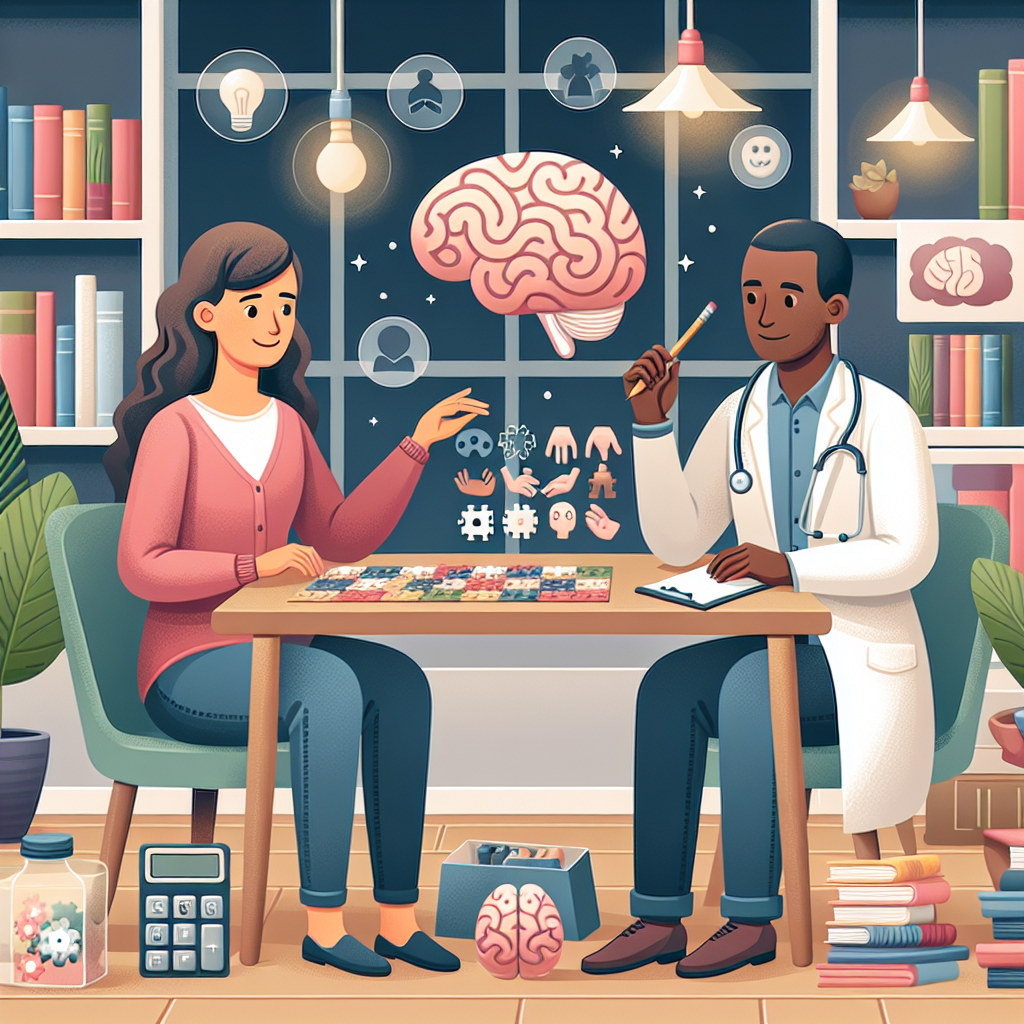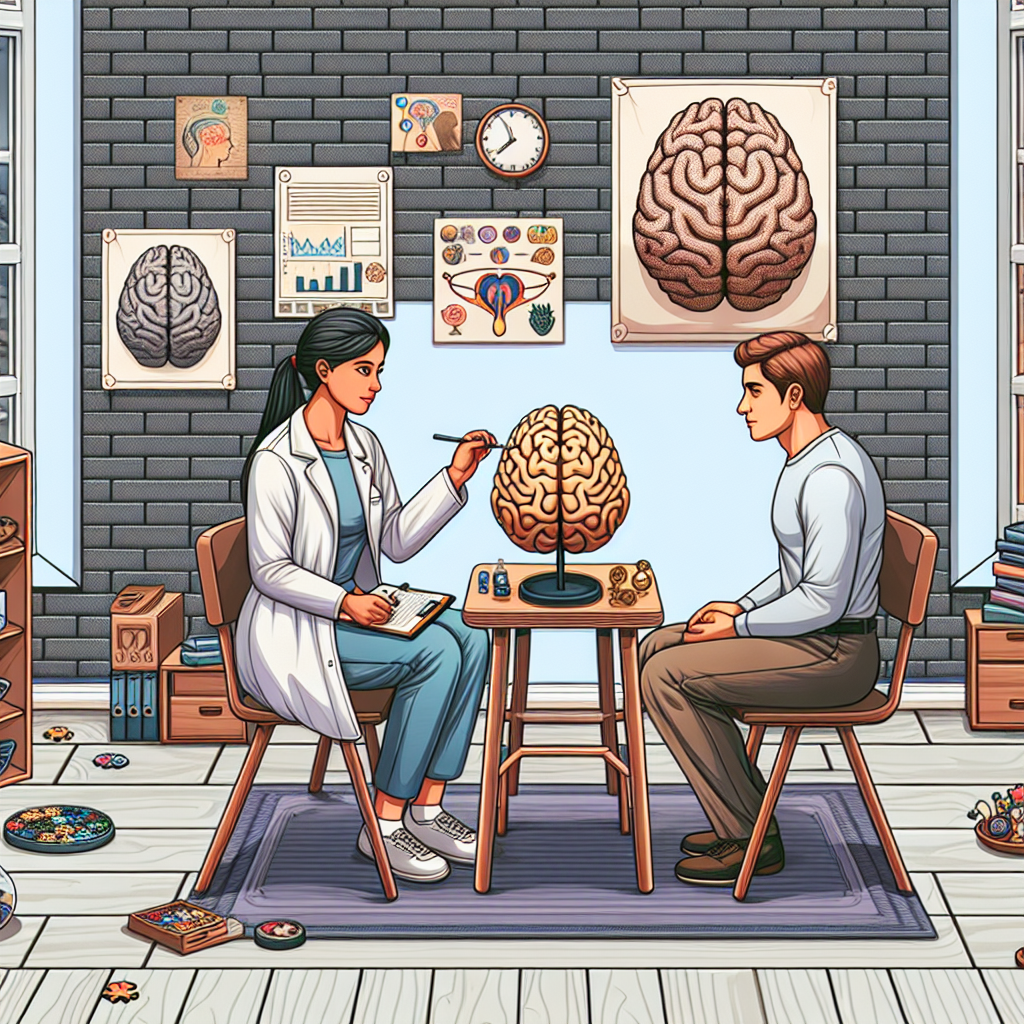How Does Cognitive Rehabilitation Therapy Address Memory And Attention Deficits?
Imagine standing on the brink of an intellectual wellspring. As if on a journey, you, the explorer, rummage through a labyrinth packed with secrets on cognitive rehabilitation therapy. This pathway illuminates the powerful mechanisms deployed to address memory and attention deficits. In the universe of your mind, each pulse and neuron channel becomes a discovery tool, each firing synapse a step towards understanding how this riveting, intricate therapy could possibly rewire, reshape, and renew your cognitive experience. Hold tight, for you’re about to embark on an intriguing exploration of “How Does Cognitive Rehabilitation Therapy Address Memory And Attention Deficits?” Enlighten your cerebral space with this fascinating insight into cognitive rehabilitation therapy.

Understanding Cognitive Rehabilitation Therapy
Let us journey through the riveting realm of the mind, where cognitive rehabilitation therapy comes into play. Characterized as a blend of art and science, Cognitive Rehabilitation Therapy works meticulously to mend the minds of those affected by cognitive impairments due to neurological insults such as traumatic brain injury, stroke, or even developmental disorders.
Definition of Cognitive Rehabilitation Therapy
Permit yourself to imagine cognitive rehabilitation therapy as a compassionate physician for your mind, striving to restore cognitive functionalities or teaching new compensatory strategies. In essence, it belongs to a comprehensive therapeutic approach aiming to bolster cognitive skills like memory, attention, and problem-solving, compromised due to brain injuries or disorders.
The overarching aims of Cognitive Rehabilitation Therapy
As you delve deeper, you’ll find that the overarching objectives of cognitive rehabilitation therapy are dual-faceted. Like an artisan aiming for perfection, this therapy’s goals are restorative, aiming to retrieve the lost cognitive functions, and compensatory, that focus on developing alternative strategies to cope when restoration is not feasible.
Key Elements of Cognitive Rehabilitation Therapy
Embarking further, you will encounter the four pillars of cognitive rehabilitation therapy: cognitive retraining, compensatory strategies, adaptive strategies, and environmental modifications.
Cognitive retraining
Imagine cognitive retraining as a diligent tutor, patiently teaching and reteaching cognitive skills that have been compromised due to trauma or illness.
Compensatory strategies
Compensatory strategies, on the other hand, equip you with ‘work-arounds’ for cognitive deficits, just as a clever inventor devises ingenious solutions for everyday problems.
Adaptive strategies
Think of adaptive strategies as your intuitive guide, assisting you in adjusting to cognitive changes, much like a seasoned traveller adapts to the local customs and language of a new land.
Environmental modifications
Environmental modifications are akin to interior design changes that optimize your surroundings to cater to your cognitive needs, like a warm, well-lit, quiet room that transforms into a haven conducive for productivity.
The Connection Between Cognitive Rehabilitation Therapy and Memory
Imagine stargazing, with stars symbolizing your countless memories. Certain neurological conditions turn some stars off, leading to memory deficits. Cognitive rehabilitation therapy works to re-ignite these, aiding memory improvement.
Understanding memory deficits
Memory deficits akin to lost stars in your galaxy of knowledge, refer to conditions where you find it challenging to recall stored information or create new memories. This can turn ordinary tasks into monumental feats.
How Cognitive Rehabilitation Therapy assists in memory improvement
Consider cognitive rehabilitation therapy as an astute detective, keen on tracing the darkened stars (forgotten memories) and reigniting them. It employs techniques like mnemonics, spaced retrieval, and errorless learning to improve memory functionality gradually.

The Role of Cognitive Rehabilitation Therapy in Addressing Attention Deficits
Where memory forms the canvas of cognition, attention is the brush that paints vivid strokes. Cognitive Rehabilitation Therapy plays a vital role in addressing and ameliorating attention deficits.
Definition of Attention Deficits
These are challenges in maintaining focus, becoming the metaphorical blurred and incomplete strokes on your cognitive canvas. Attention deficits disrupt the aesthetic balance and coherence of your mental masterpiece.
The effect of cognitive rehabilitation therapy on attention improvement
Cognitive rehabilitation therapy acts as a skilled art-restorer, carefully refining the blurred strokes in your masterpiece. Through practices such as mindfulness and metacognitive strategies, these attention lapses can be bridged.
Person-Centered Approach in Cognitive Rehabilitation Therapy
Like a tailor that designs a unique suit for each client, Cognitive Rehabilitation Therapy adopts a person-centered approach. It factors in the individual’s unique needs and goals, ensuring the therapy resonates with the person’s unique mental tapestry.
Holistic approach to therapy
Therapy is not simply carpet-bombing with cognitive exercises, but rather, a strategic ensemble of techniques targeting different cognitive facets, like memory, attention, and problem-solving. It’s much like a symphony composed for a specific mood and audience.
The integration of patient’s goals and needs
Nothing feels more reassuring than help that understands and caters to your needs. By integrating your goals and needs, Cognitive Rehabilitation Therapy offers not just a one-size-fits-all answer, but a customized, realistic, and achievable therapeutic plan.
The benefits of a person-centered approach
With its custom-tailored design, a person-centered approach enhances your cognitive attire, fostering a sense of adaptability and personal empowerment.
Therapeutic Techniques in Cognitive Rehabilitation Therapy
Therapeutic techniques in cognitive rehabilitation therapy are tactfully selected, like a skilled gem cutter choosing the right method to shape a precious stone. it comprises restorative techniques, compensation techniques, holistic approaches, and cognitive behavioural techniques.
Restorative techniques
As its name suggests, restorative techniques work like a skilled restorer of ancient artifacts, gradually improving and reviving the impaired cognitive skills.
Compensation techniques
These techniques mirror the improvisation of an engineer designing alternate routes when the main path is blocked. They introduce new cognitive strategies when the original ones are compromised.
Holistic techniques
Holistic techniques offer a comprehensive therapeutic strategy, just like an adept chef fuses distinct ingredients to create an exquisite dish.
Cognitive-behavioural techniques
In the light of challenges that come with cognitive impairments, cognitive-behavioural techniques act as your personal life coach, assisting you in overcoming emotional and psychological hurdles.
Assessment in Cognitive Rehabilitation Therapy
Assessments in cognitive rehabilitation therapy serve as the compass that guides the therapy’s direction. They determine the extent, impact, and nature of cognitive impairments that need addressing.
Necessity of thorough assessment
Just as a detailed map is crucial for a rewarding expedition, comprehensive assessment forms the bedrock of effective cognitive rehabilitation therapy, helping to unravel the unique cognitive challenges faced by you.
Types of assessments used
An array of assessments are employed in this process, much like an astronomer’s diverse telescopes each providing different insights about the cosmos. These range from standardized tests, interviews, observations, to functional evaluations.
How assessment guides therapy
The findings from these assessments help draw the roadmap for your cognitive restoration journey. They condition the degree, nature, and course of therapeutic intervention, similar to how a sailor adjusts his route based on the weather forecast.
Efficacy of Cognitive Rehabilitation Therapy in Addressing Memory and Attention Deficits
The efficacy of Cognitive Rehabilitation Therapy is undeniably compelling. Just as an enduring structure stands as evidence of an architect’s expertise, successful therapy outcomes reinstate the efficacy of cognitive rehabilitation.
Investigating the evidence base
Numerous research studies reinforce the scientific validity of Cognitive Rehabilitation Therapy, like sturdy pillars strengthening the foundation of a building.
Key studies and their findings
Much like a treasure trove of pearls, these studies reveal the lasting benefits of Cognitive Rehabilitation Therapy in improving memory and attention, besides other cognitive abilities.
Success rates and limitations of Cognitive Rehabilitation Therapy
While Cognitive Rehabilitation Therapy has achieved arresting successes in countering cognitive deficits, like any methodology, it has its limitations. It is essential to approach it as a useful tool and not a magic wand that instantly fixes all cognitive impairments.
Adapting Cognitive Rehabilitation Therapy for Different Demographics
Just as a skilled sculptor carves different figures from a single block of marble, Cognitive Rehabilitation Therapy is adaptable, accommodating the distinct cognitive requirements of different demographics.
Therapy design for older individuals
Like an expert gardener shaping an ancient bonsai tree, Cognitive Rehabilitation Therapy for older adults is tailored with respect to the cognitive effects of aging.
Therapy design for children and adolescents
For children and adolescents, Cognitive Rehabilitation Therapy is curated much like a playground that nurtures growth and development, focusing on cognitive capabilities subjected to rapid change.
Therapy design for individuals with neurodevelopmental disorders
These schemes are uniquely fashioned like an artisan’s creation, accommodating the unique cognitive developmental trajectories.
Therapy design for TBI (Traumatic Brain Injury) patients
For TBI patients, the therapy takes the form of a carefully assembled jigsaw puzzle, addressing the diverse cognitive, emotional, and physical aftermaths of brain injuries.
Future of Cognitive Rehabilitation Therapy
Gazing into the future, Cognitive Rehabilitation Therapy, akin to a visionary inventor, continues to embrace advancements and innovations, giving hope to millions around the world grappling with cognitive impairments.
New advancements and innovations
Always a step ahead, Cognitive Rehabilitation Therapy continuously evolves, like an explorer discovering new territories, incorporating advancements in scientific knowledge and therapeutic techniques.
The role of technology in Cognitive Rehabilitation Therapy
Technology plays an illuminating role in this therapeutic journey. Just as a lighthouse guides a ship through the night, modern software and devices shed light on new dimensions, making therapy interactive, accessible, enjoyable and effective.
Anticipated developments in the therapy
Just as a bud holds the promise of a beautiful bloom, the future of Cognitive Rehabilitation Therapy is expected to unfold even more innovative strategies and tools that maximize cognitive recovery, ultimately empowering individuals to lead cognitively healthy and fulfilling lives.
Through this exploration, you have come to understand the intricacies of Cognitive Rehabilitation Therapy – a therapy that unlocks the brain’s potential, nurturing the cognitive faculties akin to an expert gardener pruning his creativeness-filled plants. Always remember, even the most complex minds have the capacity for resilience, restoration, and growth.

